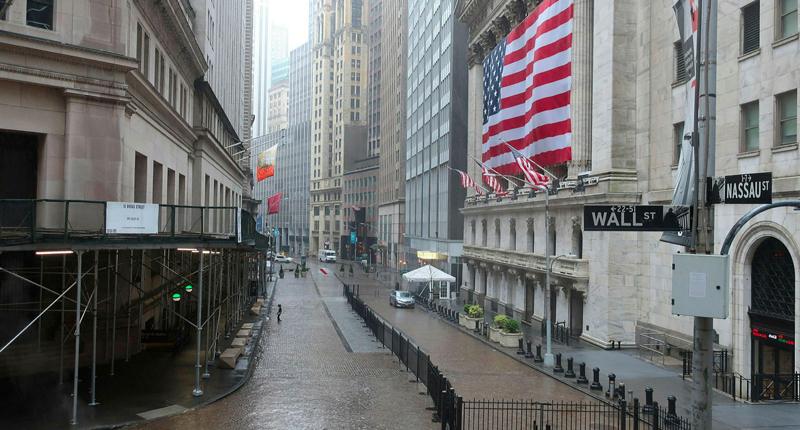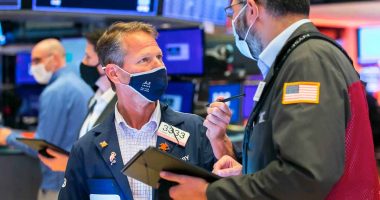US Stock Futures Moving Sideways
On Sunday evening, the Dow Jones Industrial Average futures have ticked up 90 points, while S&P 500 futures are up 8 points. Nasdaq Composite futures are up 0.4%. These stock index futures were little changed, ahead of Wall Street’s return from a three-day holiday weekend. During the holiday-shortened week, the Dow rose 3.3%, the S&P 500 gained 4%, while Nasdaq advanced 4.6%. Although the gains on Sunday evening are not large ones, they are already better than what many expected. After all, they are not in negative territory. Perhaps, it should be praised as “strong performance” considering the weekend’s surge in coronavirus cases.
But if we look at the stock indexes over the past few months, we are now back to the June 8 peak level. While this doesn’t seem like a big deal, the market could be signaling that it could be the end of the crazy volatility. Or it could be nothing, as stock prices can often move without obvious reasons. We humans can be fooled by randomness quite often.
Read More
- Are These 2 Top Tech Stocks A Buy In 2020?
- Are These The Best Consumer Stocks To Buy In July 2020?
- Is Nikola The Next Tesla, Or Better?
Coronavirus Cases Continue To Spike In The Sun Belt Region
Over the weekend, the World Health Organization said that there were more than 200,000 confirmed cases over a 24-hour span, an alarming record. In the U.S., Florida and Texas reported daily record spikes of 11,445 and 8,258, respectively, on Saturday. Should the trend in confirmed cases continue, we can expect it to overwhelm many cities’ hospitals in the coming two weeks. For this reason, the reopening momentum we saw in the stock market could slow down from the spike in Covid-19 cases. This may be suggesting a bearish outlook for stocks among investors as we have yet to be able to contain Covid-19 yet.
Earnings To Watch This Week
The reporting season kicks off mid-July. Wall Street is as clueless as it has ever been on what earnings will look like. Analysts still have no idea what earnings companies will be reporting. In fact, no one knows how companies could perform in the coming quarters, including the executives themselves. With less than half of S&P 500 companies offering guidance, the disconnect between analysts’ estimates has rarely been wider.
Although the second-quarter earnings season is starting next week, here are a few that are reporting their earnings this week. Levi Strauss (LEVI Stock Report) releases earnings Tuesday, Bed, Bath and Beyond (BBBY Stock Report) Wednesday, and Walgreens Boots Alliance (WBA Stock Report) reports Thursday.
[Read More] Is There Hope For Gold Stocks To Make New Highs?
Can Gold Price Breach $2,000 This Week?
Gold prices hit the $1,800 mark this month. This move is mainly a result of the Fed’s loose monetary policy due to coronavirus. The ongoing geopolitical tensions between the US and China also contributed to gold’s ascent. Looking back at the past decade, gold prices have been rallying since the last quarter of 2018. It is the longest quarterly run since the 2007 financial crisis.
Judging from the momentum, it is reasonable to assume that the gold price may continue its momentum for another few quarters. Of course, the gain in the near-term would very much depend on the Covid-19 situation. Many are assuming that a vaccine is unlikely to be available any time soon. Thus, the uneven economy reopening is going to limit the recovery investors have been hoping for. With the continuous monetary policy support, we are expecting to see a weaker dollar in the near-term. A weak dollar is good for the gold price.
ISM non-manufacturing
The Institute for Supply Management’s (ISM) non-manufacturing index measures employment trends, prices, and new orders in non-manufacturing industries. In other words, investors watch the index for signals for economic growth and corporate profits. The data for the month of June will be available Monday morning. Economists expect the index to rise to a 50.0 from 45.4 in May, according to Bloomberg.
Though the services sector likely saw a bounce in activity during June due to reopenings, the level still remains well below what it was pre-COVID. “If the ISM non-manufacturing index for June is also above 50, this would be yet another sign that economic activity bottomed out in April and has been on a steady upward ascent since,” a note from Wells Fargo Securities.









